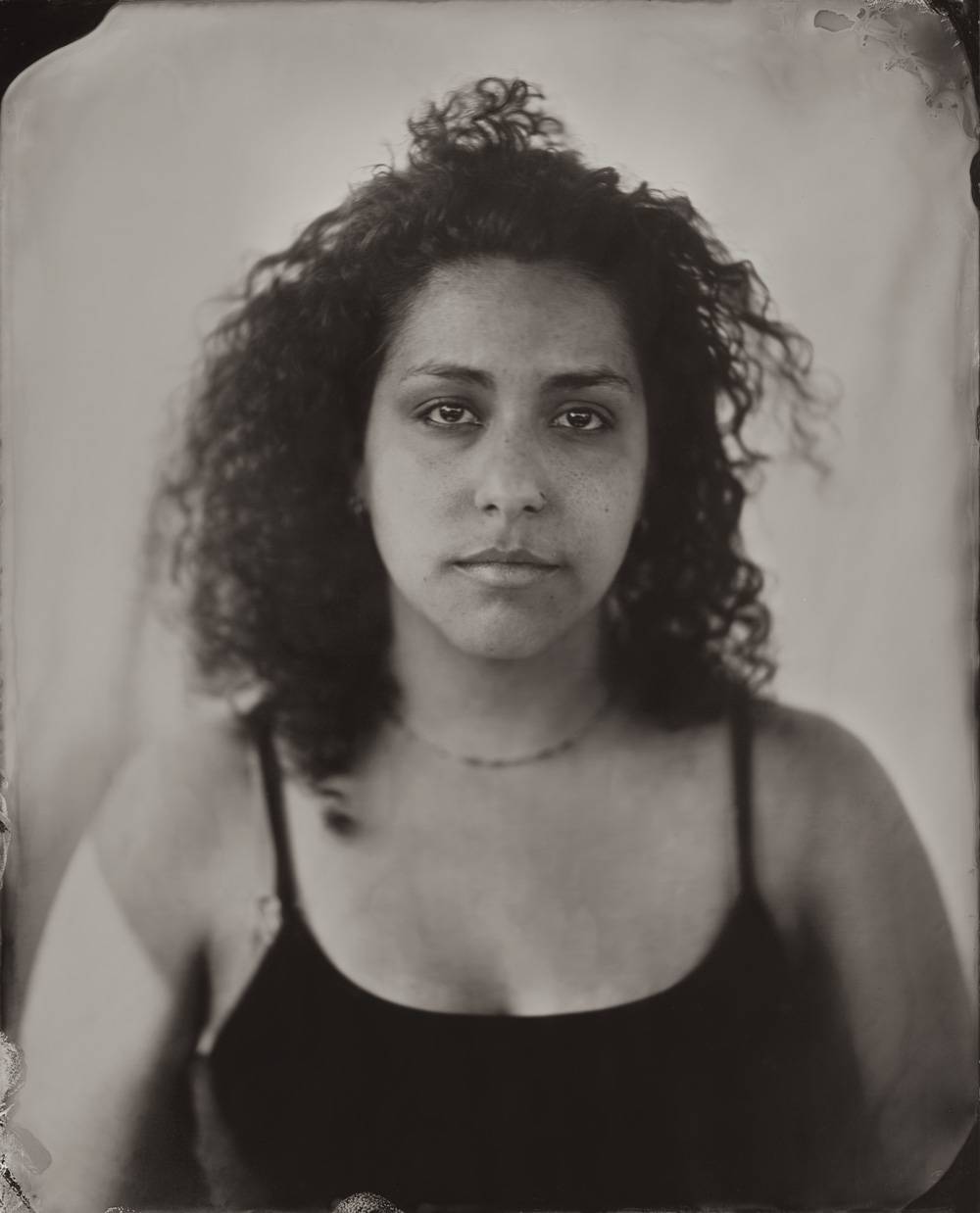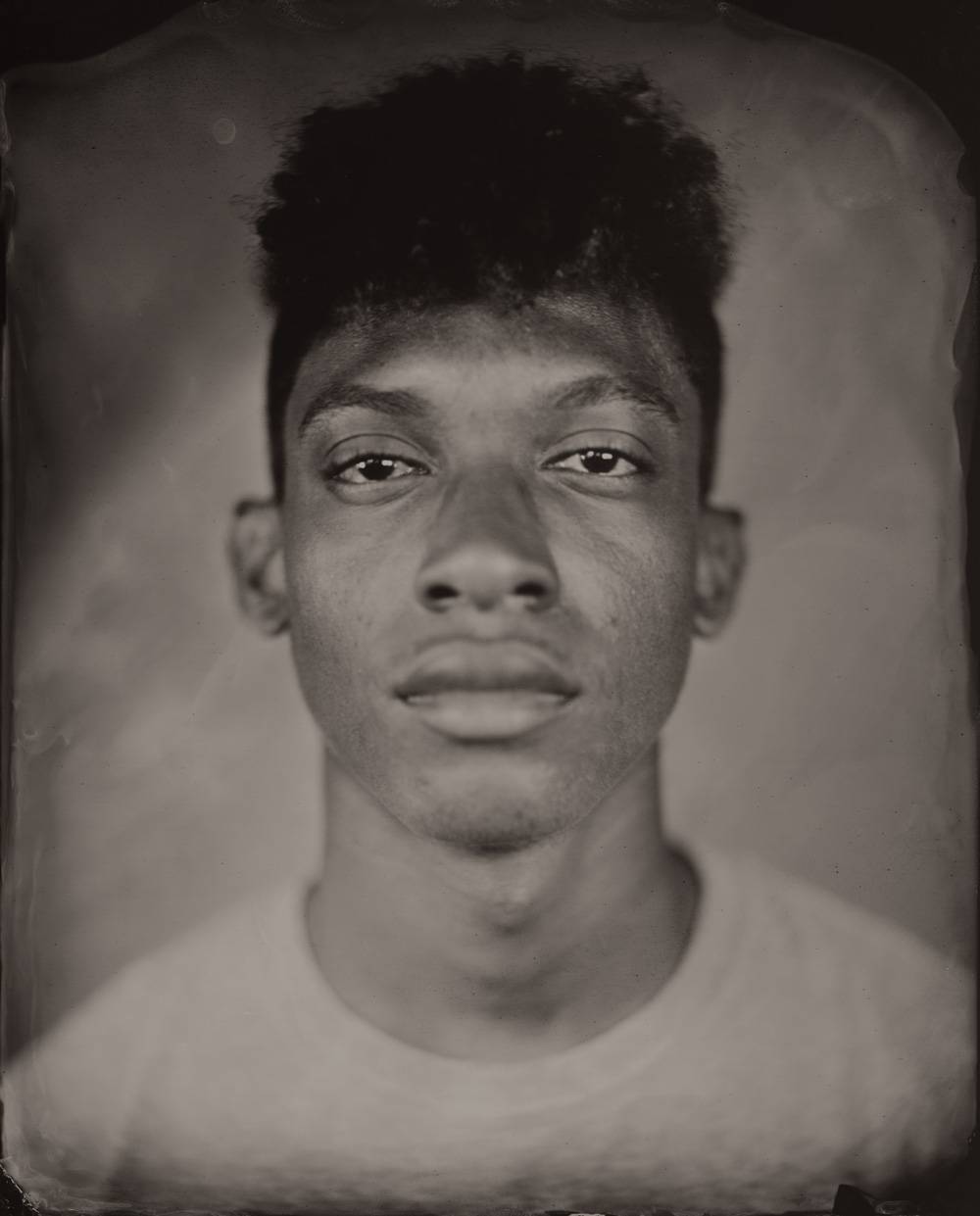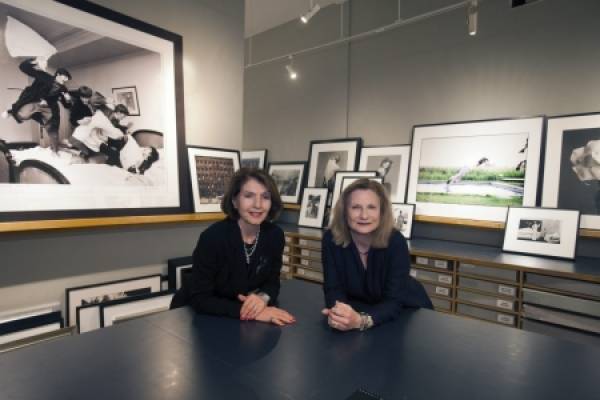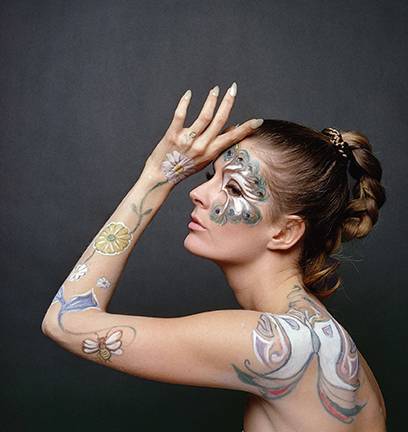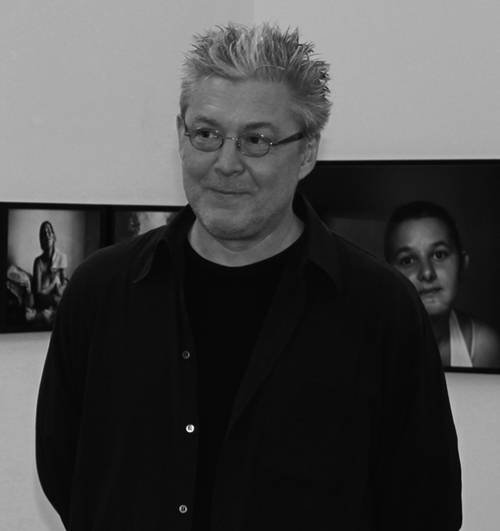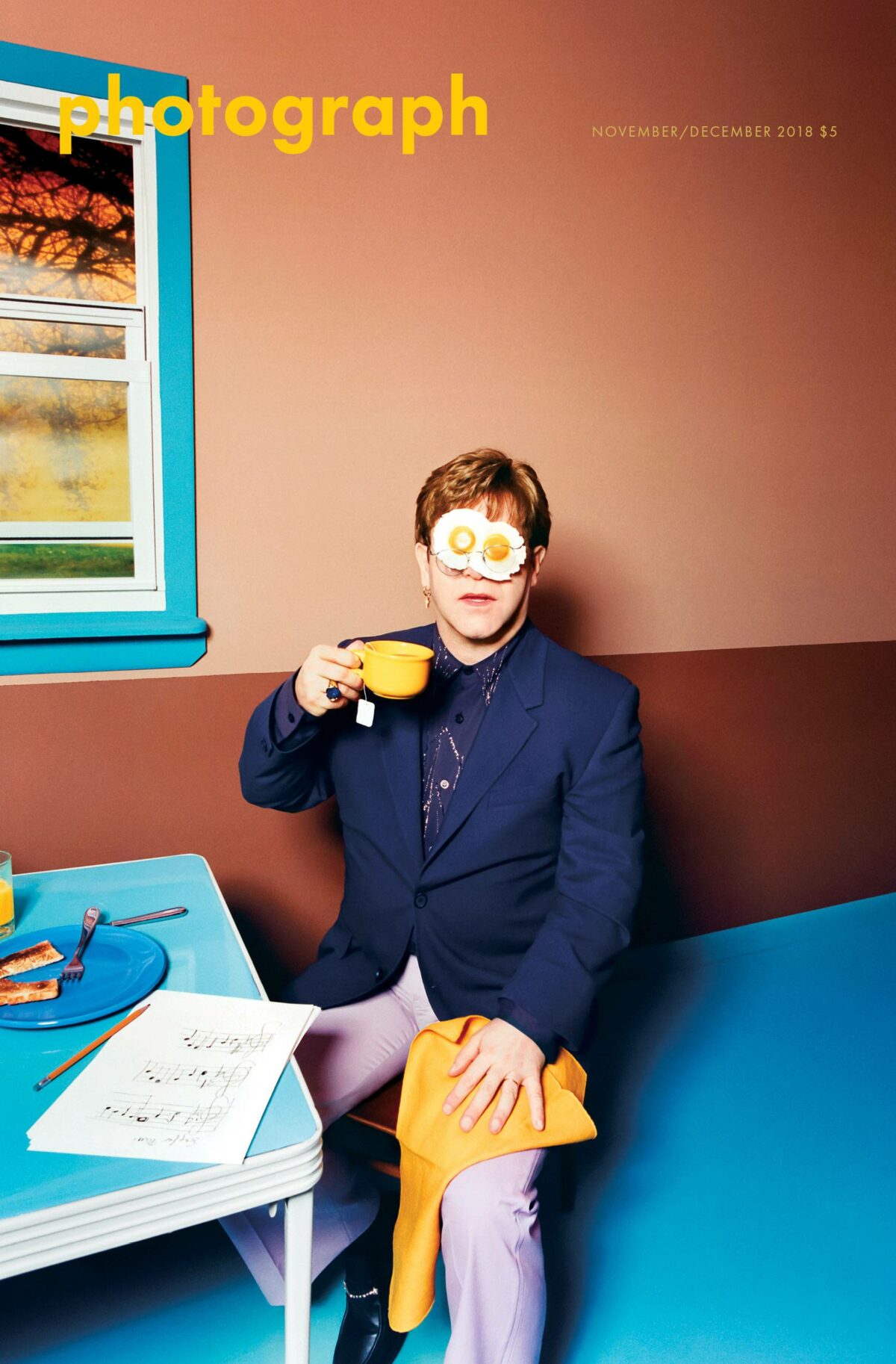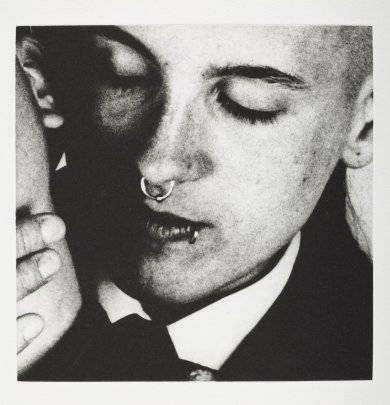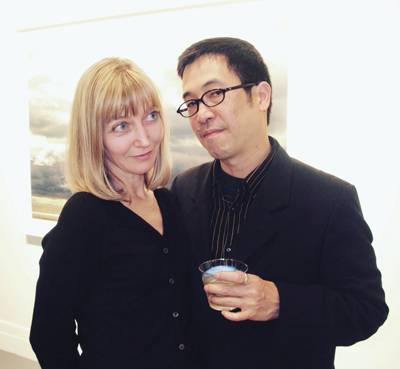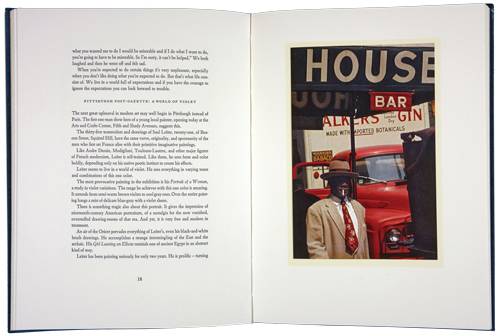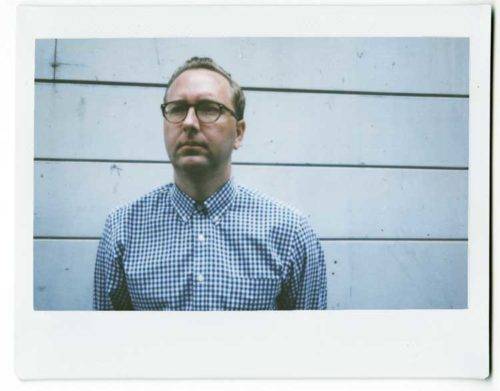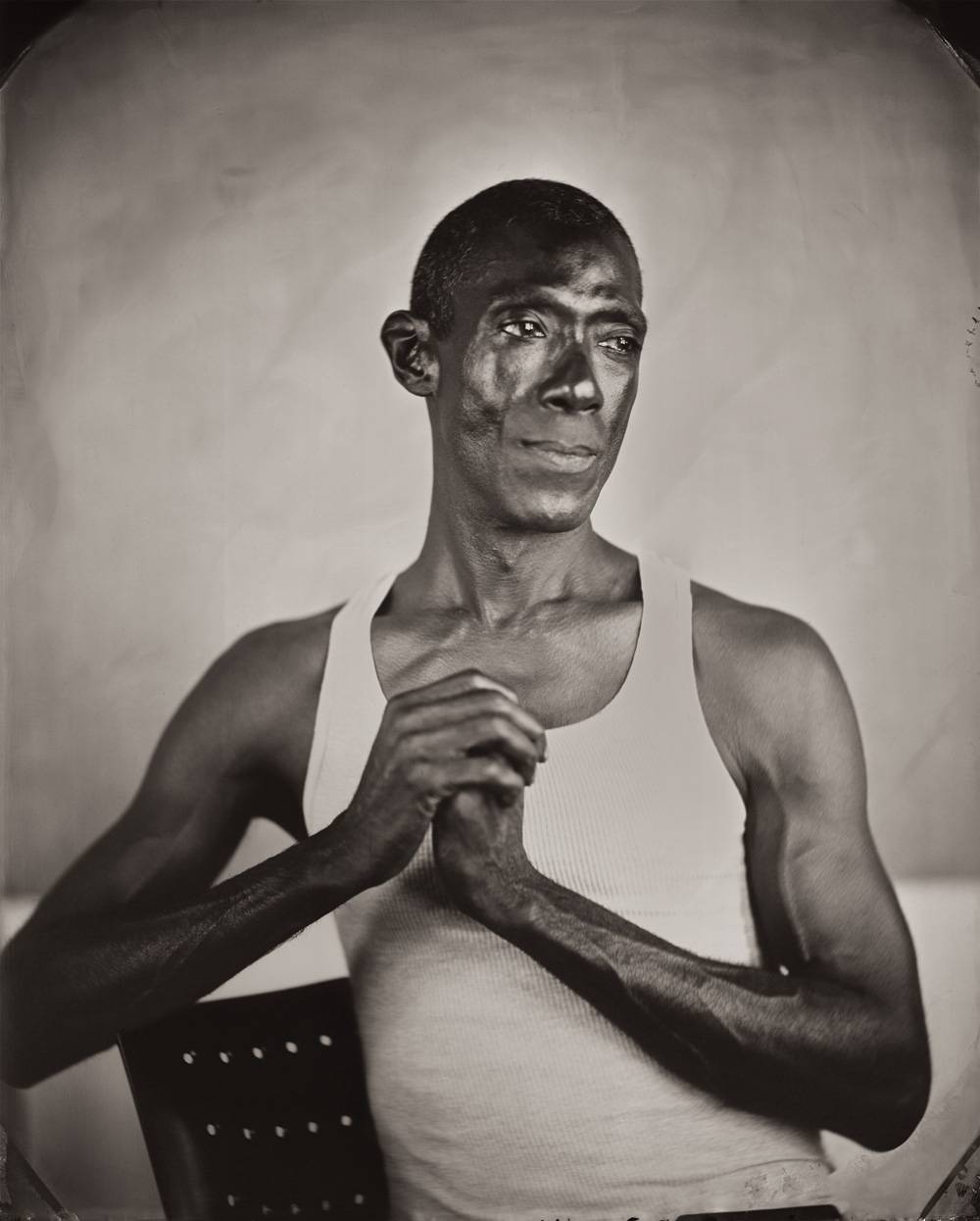

Sometimes a look back can bring things into focus. Keliy Anderson-Staley’s portraits are of contemporary Americans, yet they evoke early 19th-century photography: they are both timely and timeless. While studying for her MFA at Hunter College, Anderson-Staley was drawn to traditional photographic processes, specifically wet collodion tintypes, a technique chiefly used from the 1850s to the 1890s, before the introduction of film. Julia Margaret Cameron and Mathew Brady used it, and Anderson-Staley decided that she could achieve her vision in portraiture with it.
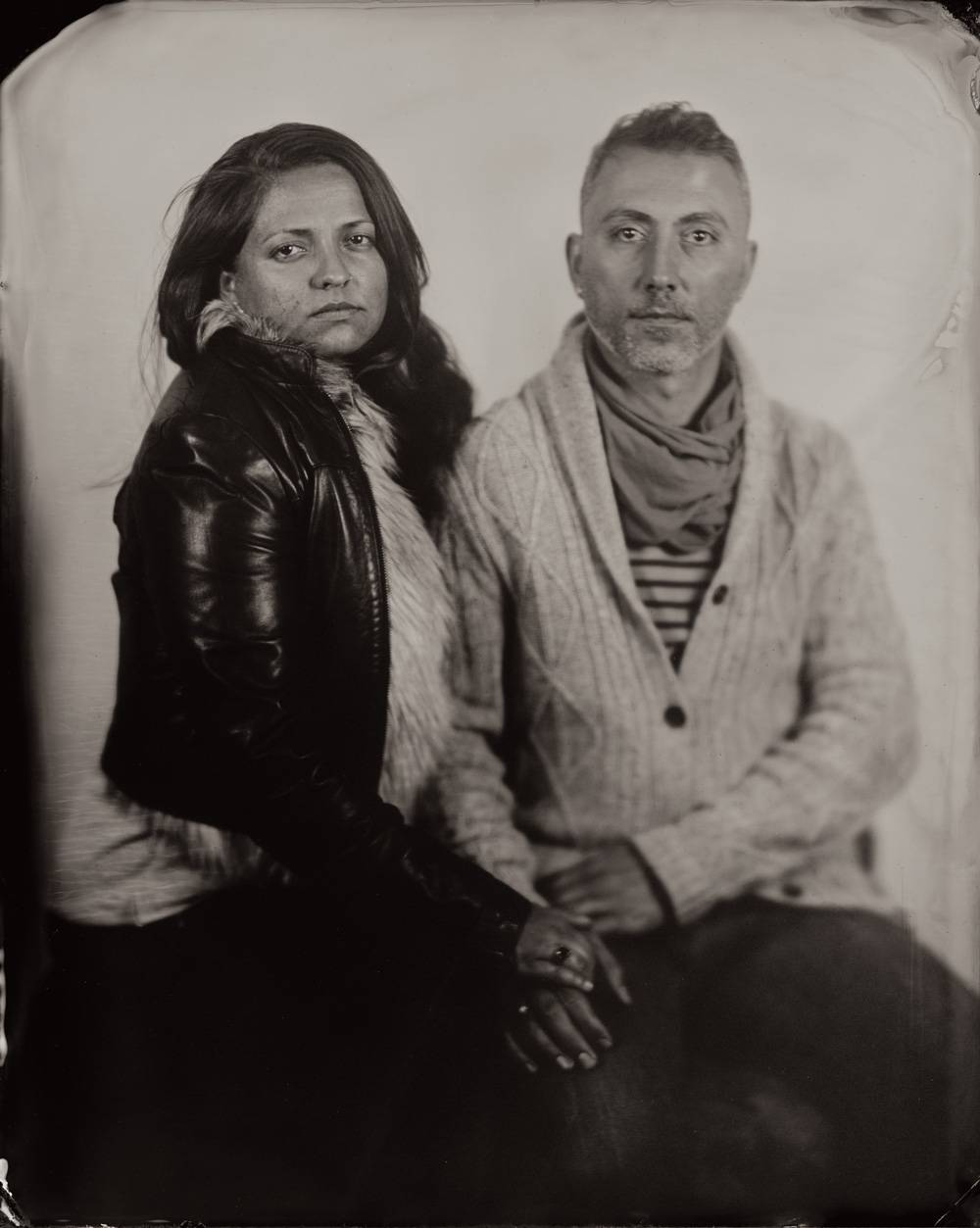

It was a challenging choice: metal plates must be coated with a complex mixture of chemicals; sitters must remain motionless before the camera for 10 to 30 seconds; and the wet plates must quickly be transferred to a portable darkroom and developed within five minutes. With the long exposures and shallow depth of field, Anderson-Staley has created a mesmerizing body of work: her sitters stare out at us, their eyes convincingly alive, their surroundings fading away.
For the last 10 years, Anderson-Staley has been taking portraits of Americans all over the country. Rather than identifying her subjects by group, as August Sander did, she has created an archive of portraits, some 3,000 so far, that add up to a tapestry of the faces that make up America. In her photographs, it is the sitters’ eyes that speak, clothing and background are unimportant. She avoids stereotyping: her sitters are people who have randomly crossed her path, unidentified by race, class, gender, religion or occupation, a fact that makes her work particularly relevant to current political discussions.
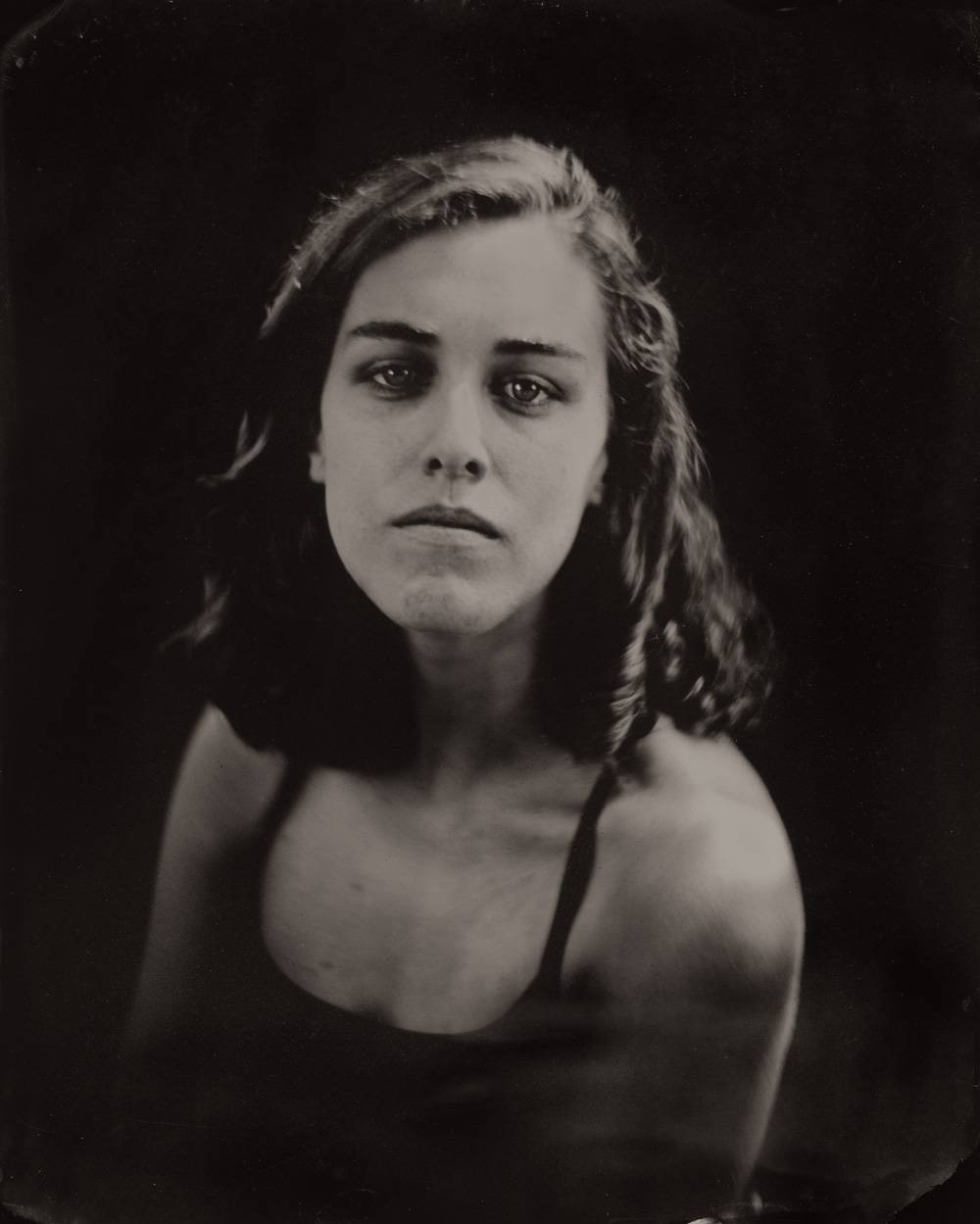

Most recently, Anderson-Staley completed photographic portraits of more than 130 Clevelanders, 50 of which are exhibited in a dramatically lit Rapid Transit train tunnel. The works will be on view for at least five years, where they can be seen by the people of Cleveland and by visitors to the city, including the delegates, activists and members of the press who attended the 2016 Republican National Convention.
